As the UK government has instructed the nation to stay at home and only venture out for specific, essential reasons in light of the Coronavirus (Covid-19) situation, many of us are being encouraged to park our cars if we can. Some owners of Toyota hybrids might be wondering what will happen to their car during long periods without use, particularly when it comes to the level of charge in the batteries.
The reassuring news is that no difficult car maintenance is necessary. However, there are some tips that, if followed, can help ensure your Toyota remains in tip-top condition during an extended layoff.
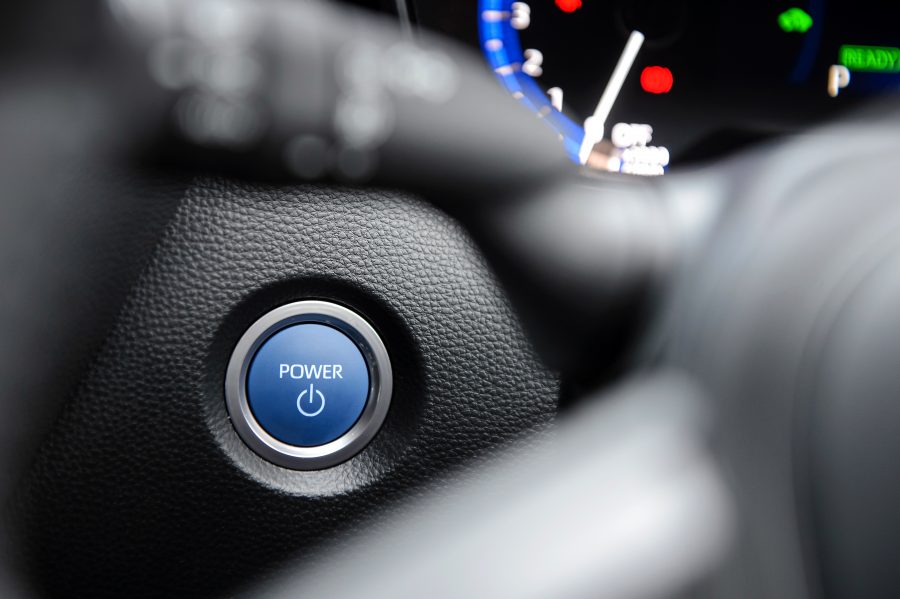
To recap, Toyota hybrids generally contain two batteries: a 12-volt battery (which powers systems such as the headlamps and audio) and a high-voltage hybrid system battery (which supplies the power to start the combustion engine and drive the electric motors).
The simplest way to maintain charge in both of these batteries is to simply go through the normal start procedure: press the ‘Start’ button with your foot on the brake and ensure the ‘Ready’ light is illuminated on the dashboard (you don’t have to keep your foot on the brake thereafter, but ensure your vehicle’s transmission is in ‘Park’ and the parking brake is engaged).
We recommend you put the car in ‘Ready’ mode for about 60 minutes before switching it off again and repeat the process at least once a week, providing you can carry out this procedure while adhering to the government’s advice regarding social distancing and Coronavirus (Covid-19). Please do not leave your car unattended when it is in ‘Ready’ mode.
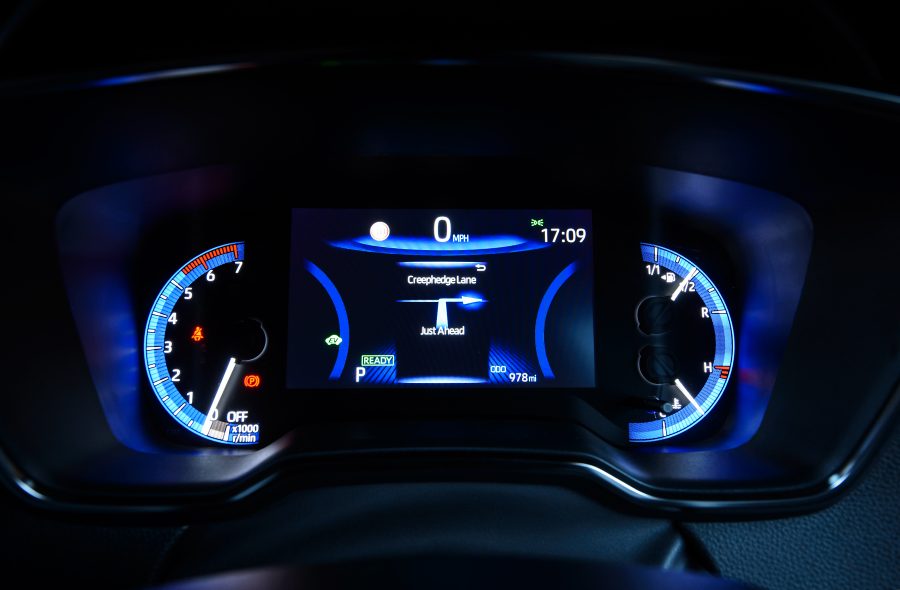
During the time that that car is in ‘Ready’ mode, you may hear and feel the internal combustion engine kick in; this is a normal part of the self-charging process. You might be tempted to switch on the radio to pass the time, or turn on other systems, but bear in mind these will consume small amounts of electrical power so it is preferable to leave them off.
Ensure the handbrake is on; there’s no need to go for a drive, although we must stress that this procedure should take place in a well-ventilated area – something to consider if you park your vehicle in a garage.
What if my Toyota isn’t a hybrid?
Our petrol and diesel cars only have a 12-volt battery, which provides the power to start the engine in addition to the other systems mentioned above. Regular start-up of the vehicle on conventional petrol and diesel engines needs approximately 20 minutes of running to put back into the battery what you remove on start up, so to maintain this battery we would suggest 60 minutes of running at least once a week.
Is there anything else I need to do?
Whether you own a hybrid or a Toyota equipped solely with an internal combustion engine, there are a few other easy car maintenance points that can ensure your Toyota hybrid remains healthy and happy during an enforced hibernation. Again, please adhere to the latest government advice regarding social distancing.
- Check the tyre pressures are fully inflated to the recommended level and top-up if necessary. It can be a good idea to repeat this process when you first drive your car after a long period of inactivity.
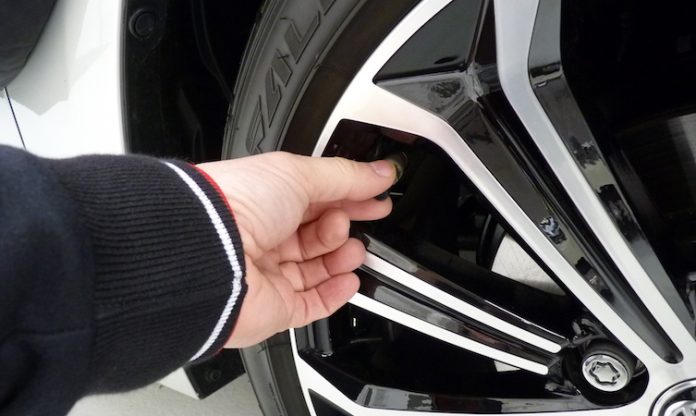
- Clean the car thoroughly inside and out. If you are storing your car in a garage, make sure the vehicle is completely dry before you put it away.
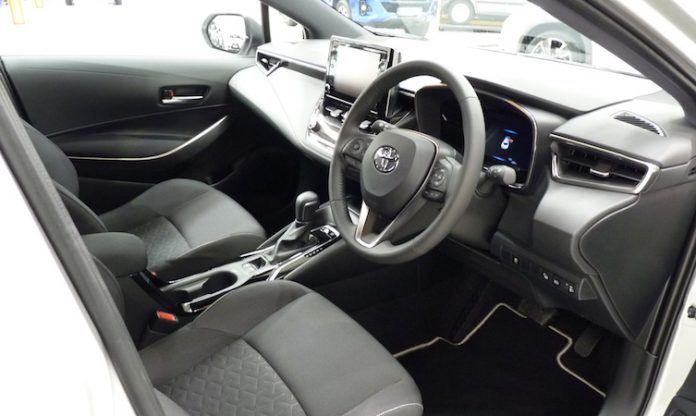
- If you do plan to store your car in a garage, ensure the chosen storage area offers plenty of ventilation. If the space is secure, you could consider opening one of the car’s windows a small way to ventilate the interior. If you do this, you might have to change your car alarm’s setting to prevent it setting off the intrusion sensor – please consult your car’s manual for more information.
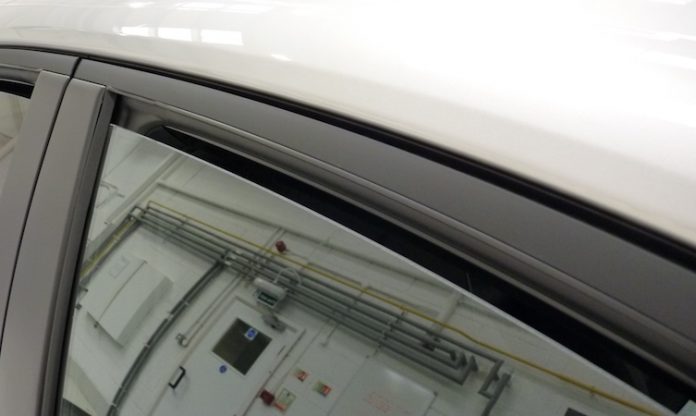
- It can be beneficial to leave the vehicle with the parking brake disengaged to prevent the brakes from binding, but only do this if you are certain the car is on level terrain and isn’t going to move. Ensure the transmission is set to ‘P’ for park and place wedges or chocks, if you have them, under the wheels.
- If you have a 12V battery trickle charger, or a solar panel charger, and are confident using them, then these are a good option to keep the battery fully charged while the vehicle is stationary for a period of time.
- If your vehicle is equipped with smart entry and start but the system isn’t operated for a long time, a battery-saving function will automatically be activated to prevent the electronic key battery and the 12-volt battery from being discharged. Battery depletion in the key is minimised by stopping the electronic key from receiving radio waves. On many models equipped with this system, it is possible to manually put the key into battery-saving mode, so please consult your car’s handbook for more information. If you aren’t planning to drive your car for a long time, consider putting the smart key in a safe place and not carrying it around with you in your pocket. This will prevent the car from ‘waking up’ unnecessarily should you happen to walk near it in your garage or driveway.
- If the vehicle will be kept on private property (such as inside a garage) for the duration of its storage, you could consider applying for a Statutory Off Road Notification (SORN). This informs the DVLA that the car is off the road and you will receive a refund of any remaining full months of tax. However, you won’t be able to drive your car legally until you tax it again, so it is only advisable if you are positive you won’t use your car for a long time. You can read more information about how to SORN your car here.
Read more Toyota GB’s latest statement on the Coronavirus (Covid-19) situation
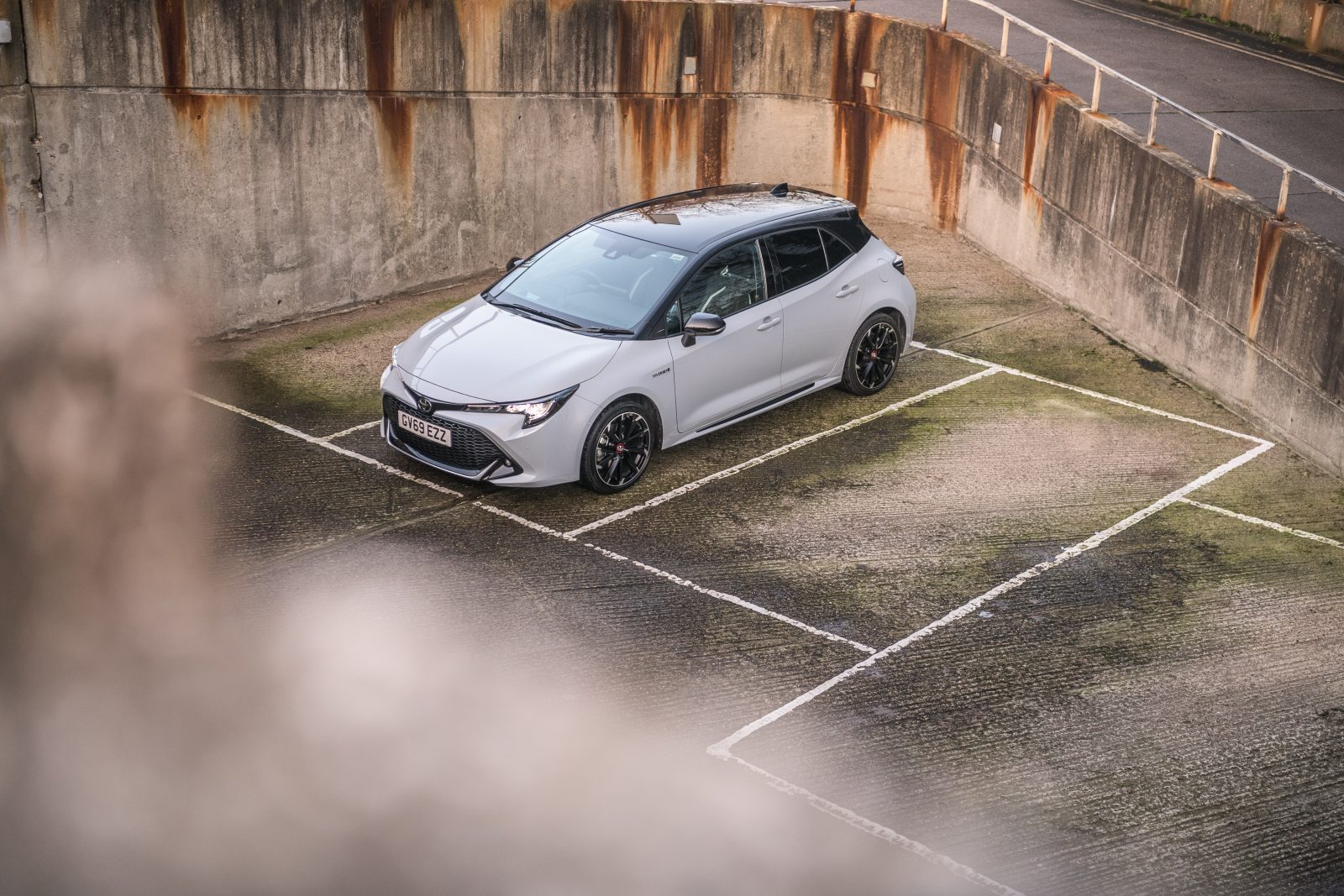

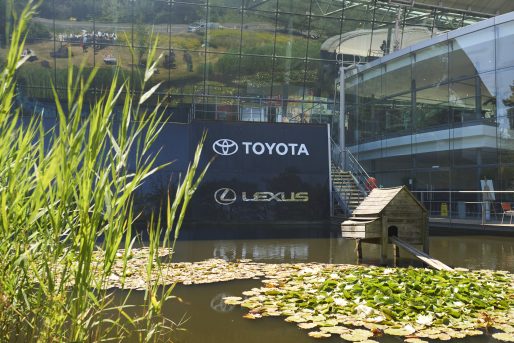
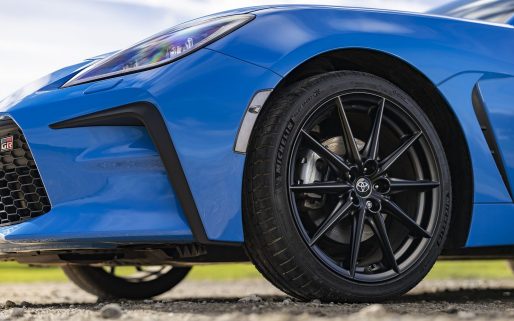
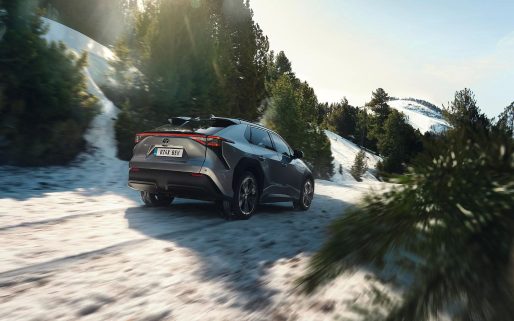
Thank you so much, very helpful. I move my car either forwards or in reverse a few feet to uensure the tyres are ok and not in one position against the road surface.
Hi Jenny,
Thanks for your message. We’re glad you’ve found the tips useful. What car do you currently have?
Not had this problem till now during six years of ownership of Yaris Hybrid. Never done many long journeys but now is the longest it has stood, in the cold and the battery is six years old. WIll see what happens after a decent charge.
Hi I’ve brought a solar charger panel for my yaris hybrid,if I leave it plugged in for 2 weeks while I go on holiday will this be safe for the battery ie won’t do any damage , as I don’t want the battery to be flat when I get back , which has happened when I’ve just left it for 2 weeks
Hey Tracy,
Thanks for your comment.
This shouldn’t be a problem. But we’d recommend following the specific instructions provided with your solar charger to ensure it is set up correctly.
We hope this helps.
Thank you.
How do you disable the electric hand break so it doesn’t stick on, car is locked and covered at the moment
Hi Danny,
Thanks for getting in touch. Could you please provide us with your reg? We can then look into this further for you.
Thanks.
I live in northern Italy and own a 2015 Auris TS Hybrid. Before coronavirus lockdown, I left the car inactive for a fortnight twice and both times the 12V battery was so low that I could not put it on Ready, even if I could open the doors. Both times an hour of battery charging was enough to put it on Ready. Remembering this after two weeks of lockdown I checked and it was in the same condition. The car is parked in an open condominium area. I left the battery charging for a couple of hours then I left it on Ready for about 20′ (the main battery was 6/8 full). I checked again one week later and the battery was completely dead, I could open the doors only with the mechanical key. I left it in charge for three hours, and did not put in on Ready, planning to repeat the operation. after one week. In the while the confinement rules hardened and now I can not access the car without wearing a mask that I can not get. Ten more days went by and I was planning to make a nighttime sneak to remove the 12V battery, bring it at home and charge on my balcony. Now I see that without 12V energy I can not open the rear hatch (https://www.toyotanation.com/threads/how-to-open-back-door-with-dead-battery.1013186/#post-8679562). Or does this work on the Auris as well: https://www.youtube.com/watch?v=Lnss8rIMRco ?. It seems a dead end situation with no way out!
Hi Roberto,
Thanks for getting in touch with us. We hope you’re well and staying safe.
We’re sorry to hear about the issues you’re experiencing with your Auris. We would recommend contacting Toyota in your region for further help with this.
Thanks.
I have Toyota Prius Hybrid, reg June 2019, latest model, garaged. I am taking it for 20 mile A road run approx every 2 weeks. Is this ok?
Thabk you
Hi Rosalind,
Thanks for getting in touch. Following government advice to stay at home and only venture out for specific, essential reasons in light of the Coronavirus (Covid-19) situation, many of us are being encouraged to park our cars if we can. In this case, the simplest way to maintain the batteries is to go through the normal start procedure and put the car in ‘Ready’ mode for about 60 minutes, providing you can carry out this procedure while adhering to the government’s advice regarding social distancing and Coronavirus (Covid-19). Carrying this out once a week should be sufficient without having to make any non-essential journeys.
You can find more details of the process in the blog post above.
Thanks.
Hello I have a Toyota Corolla icon tech registered July 2019 I have followed the guide line and started it up for an hour a week but I just went to do it this morning and my key fob doesn’t work so manually opened the door and it won’t even power up my car is totally dead what should I do
Hi Michelle,
Thanks for getting in touch. We are really sorry to hear about this. In this case, we would recommend contacting your roadside assistance for further help. If you are covered by Toyota Roadside Assistance, you can contact them directly using 0800 246 824. Alternatively, you can find more information here: https://www.toyota.co.uk/owners/roadside-assistance/
Thanks.
most probably you need to change the key betteries.
I have a 2014 Auris, and since being laid up during the current lockdown, I found the alarm was repeatedly going off and I could not unlock the car. As the manual was locked inside, I could not check what to do. Following the recharge instructions on this site, I was able to reactivate the battery. I am mentioning this simply because of the alarm issue, which was presumably stimulated by a flat battery. Can one inactivate the alarm to avoid this problem?
Hi John,
Thanks for getting in touch. Please could you provide us with the reg? We can use it to look into this for you.
Thanks.
Hi I have a 2018 chr hybrid which has been in my garage for 2 weeks without use. I tried to start it this morning but as I pressed the start button all the warning lights started flashing on and off and there wad a clicking noise coming from under the bonnet, the on screen computer did not show anything and it was difficult to actually all this. I eventually managed to close it down but the car won’t lock now either. Could this be just a low charge on the 12v battery or is it the actual hybrid battery.
Hi David,
Thanks for your message. Without being able to assess the car ourselves, we can’t suggest what the cause may be. Therefore, we would recommend contacting Roadside Assistance for any immediate help as our Toyota centres are closed following government advice. If you are covered by Toyota Roadside Assistance you can contact the team directly on 0800 246824.
Alternatively, you will be able to find steps to take in an emergency in the owner’s manual that you can access via this link: https://www.toyota.co.uk/tme#/my-toyota/eManual
Thanks.
Since the week prior to the start of the lock down I followed advice for my Hybrid Toyota Yaris not to leave it undriven for more than 2 weeks. Nearly 2 weeks ago I had to use it to go shopping, but only went locally. From the start to the end of that short journey the energy level of the battery displayed on screen had, unsurprisingly, dropped from 6/8 fully charged to 5/8. So this-afternoon I looked again for advice via your official Toyota Blog site. I followed it and prepared for the 60 minutes time needed. As warned the self-charging kick-in duly happened after about 15 mins, then again after about another15 mins. But neither kick-in charged the battery. I stopped the attempt when the energy level had dropped to only 2/8 capacity in just over half an hour. Has anyone found the advice helpful?
Hi Jan,
Thanks for getting in touch. We would recommend not worrying about the energy level indicator and to continue following the steps and advice in this blog post. The car will not allow the hybrid battery to go flat as our hybrids are always monitoring the hybrid battery, and if it starts to get lower than a set amount the engine will start to charge it.
Thanks.
The truth is, if the battery has been badly discharged and left discharged, the plates can sulphate and buckle, which starts the ruination of the battery. In designing the car the team are looking for optimum performance, which involves reducing the weight of the vehicle wherever possible. Batteries are a heavy component and the storage capacity of the battery is directly proportional to its size an weight.
I would much rather have a larger capacity battery which would prolong the drain caused by all the electronic features of the Hybrid when the vehicle is shut down. This would be at the expense of Toyota’s award winning fuel consumption figures, which would not go well with their sales team.
Quite frankly, it is ludicrous to expect a customer to go out and run their car for an hour to charge up their inadequate 12V battery, or to take it on a long drive to nowhere. This has been suggested to me by some Toyota employees, so it must be Company policy.
I will have a dabble with Solar charging, which I don’t expect to be successful during the Winter; or alternatively a decent capacity 12v battery in the boot, in parallel with the one under the back seat; and happily put up with a slightly reduced mpg. You can’t have it all ways.
As an NHS volunteer and key worker I’ve been giving my car a run for at least 30 minutes every less than a week. Last week, after less than a week stationary it was completely dead. Roadside assistance helped and I gave it a good run. The battery health appeared fine.
Today I needed to make a journey (less than a week since the last run) and the car was completely dead again.
Is this a common issue? My friends have cars that have been sat for 2+ weeks at a time and start fine?
Hi Emma,
Thanks for getting in touch. We would also like to thank you for everything you are doing at this time. We would like to help you further with this and will email you directly requesting your contact details so that we can put you in touch with our customer relations team.
Thanks.
Battery is had it, mine is the same.